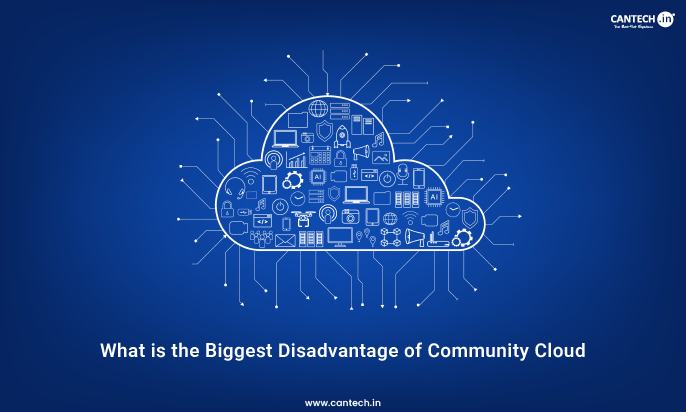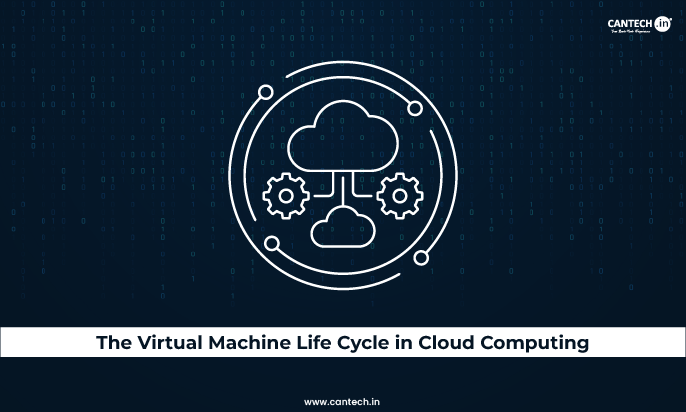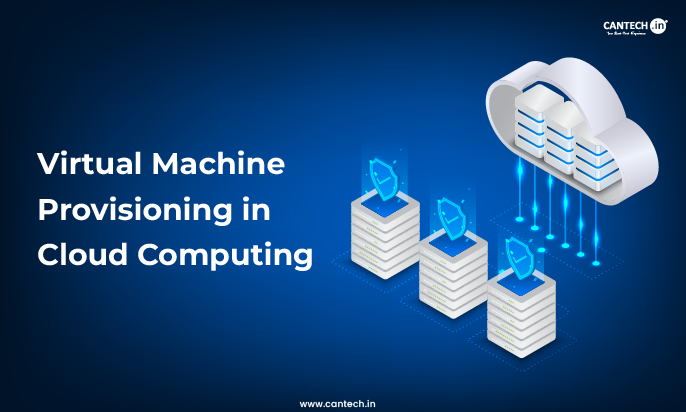Introduction
With so many cloud models available, it becomes difficult to choose the right one. Some organizations cannot use the public cloud because they have sensitive data. Others feel that the private cloud is too expensive or complex to manage. So, they look at the community cloud as a middle option.
This blog will explain the concept of the community cloud along with its benefits and limitations. Most importantly, we will discuss “What is the biggest disadvantage of Community Cloud?”. Also, know the considerations before getting started with the community cloud.
What is a Community Cloud?
The community cloud model is designed for a group of users who share common concerns and security goals. Multiple organizations could use this single cloud environment, i.e. shared infrastructure model. These users can belong to one industry or sector. For example, government departments, research agencies, or healthcare networks may choose to build and use a community cloud together.
Features of a Community Cloud:
- The aim of community cloud is to get the benefits of a private setup without bearing the full cost.
- This cloud setup is governed by agreed-upon rules.
- All the organizations contribute resources and follow the same security, compliance, and performance standards.
- All parties are responsible for maintaining the system together directly or through shared contracts.
- The community cloud is managed by a third-party hosting provider or by one of the organizations within the group.
Why Do People Choose Community Cloud?
Below are the main benefits of adopting community cloud models:
1. Better Security Standards
A community cloud offers better security controls than a public cloud. Since only Authorized organizations can access the environment, it reduces the risk of unknown users entering the system.
2. Shared Cost Model
Each user contributes to the infrastructure cost. This makes it cheaper than a private cloud while still maintaining some level of exclusivity.
3. Compliance-Friendly
For sectors like banking or healthcare, rules like GDPR or HIPAA must be followed. A community cloud is designed to meet such shared compliance requirements.
4. Joint Management
All the users in the group share responsibility for maintenance and upgrades. This creates a sense of collective control and trust.
5. Customization for Group Needs
Unlike public cloud, where features are standard, a community cloud can be designed to match the group’s specific operational policies.
The Biggest Disadvantage of Community Cloud: Lack of Full Control
Let us break down this problem in more detail below.
Governance Becomes Complex
It becomes difficult to make everyone follow the same rulebook. Every organization has its own working style.
These governance issues lead to conflicts. Also, even basic maintenance tasks can get stuck because not all members may agree on timelines or priorities.
No Single Point of Ownership
In a private cloud, the owner can make decisions and act fast. But in a community cloud, there is no single point of control. Every organization has partial rights. This leads to confusion about who will take responsibility when something fails.
The affected party may not know whom to contact in case of a backup failure or a delayed security patch. Blame-shifting starts, and real problems remain unsolved.
Delays in Updates and Upgrades
The provider must inform about any software updates to all users and wait for joint approval. If one user is not ready, the update gets postponed.
This delay creates vulnerabilities. A security patch delayed even by a few days can expose the system to attacks. Also, the delay blocks innovation and puts pressure on IT teams.
Shared Resources Lead to Imbalance
The community cloud depends on resource sharing. But not all users consume the same amount of CPU, memory, or bandwidth. A large user may slow down the system for others. A small user may feel they are paying for unused resources.
This imbalance causes dissatisfaction. It becomes difficult to plan resource allocation fairly.
Security Accountability Gets Divided
Although the cloud is designed for secure access, the responsibility for security is shared. If an incident happens, no single user takes full accountability.
This creates problems during audits or investigations. For sensitive sectors like healthcare or defense, a lack of clear security roles can lead to non-compliance penalties.
Delays in Decision-Making
Various types of delays discourage innovation and make the system rigid.
For example, one user wants to integrate a new application into the system. That integration might need access to the cloud’s backend. But the other users may not support it as they fear the risks. So, the request either gets delayed or denied.
Over time, some users drop out and look for private solutions.
Not Suitable for Rapid Scaling
A business that grows rapidly needs a system that can expand on demand. In a community cloud, such expansion must be approved by all members. If others are not ready to scale, the growth gets blocked.
This becomes a serious issue for startups or fast-moving companies that want cloud flexibility.
Other Limitations of Community Cloud
Apart from the control-related challenges, there are other minor limitations which are important for users to know before adopting this model.
Limited Vendor Support
Many third-party software providers do not customize their tools for community cloud users. You may not get full integration support.
Exit Challenges
If one member wants to leave the setup, the transition can be complex. Their data must be separated securely. Also, billing models must be adjusted for the remaining users.
Data Locality Concerns
Some users need their data stored in specific regions due to legal rules. But in shared clouds, this becomes difficult to manage on a per-user basis.
When is Community Cloud Still Useful?
Despite the limitations, community cloud works well in certain fixed-use cases.
It suits organizations that follow the same law, have common workflows, and do not need frequent changes. This includes public sector units, research bodies, and regulated industries.
But it is not ideal for fast-growing businesses or organizations that need customizations on demand.
What Should You Do Before Choosing a Community Cloud?
If you are considering a community cloud setup, it is important to take some steps first.
- Define the shared goals clearly.
- Set fixed rules for changes and approvals.
- Make sure everyone agrees on who will manage the system.
- Prepare a disaster recovery and exit plan in advance.
- Choose a reliable cloud hosting partner who understands shared governance models.
At Cantech, we help businesses and government clients build secure and compliant cloud environments with proper role-based access and smart management layers. Our hosting solutions are designed for Indian organizations that want performance without confusion.
Conclusion
When multiple organizations share the same system, no one can move fast or change things easily. This delays decisions, creates confusion, and limits flexibility. Over time, this becomes the Biggest Disadvantage of Community Cloud and a serious roadblock for innovation.
If your organisation needs speed, autonomy, and reliable support, consider speaking to a cloud hosting expert who can guide you with the right approach.
Explore Cantech’s private, public, and hybrid cloud solutions built for Indian businesses. Visit Cantech to know more.
FAQs
What are the disadvantages of the community cloud?
The biggest disadvantage of community cloud is that no single user has full control. It becomes difficult to make changes quickly or scale the system without approval from other members. Shared governance often leads to delays and confusion.
What are the advantages of community cloud?
Community cloud offers better data privacy than public cloud and is more affordable than private cloud. It helps similar organisations meet common compliance needs while sharing infrastructure and costs.
Who should use the community cloud?
Organizations with similar security, legal, and operational needs can benefit from the community cloud. It works best for public sector departments, education bodies, and regulated industries like finance and healthcare.
Is the community cloud secure?
Yes, the community cloud is secure when managed properly. All members follow a shared security policy, and access is limited to authorized users only. But responsibility is divided, so coordination is very important.
Can a small business use a community cloud?
A small business can use a community cloud if it joins a group with shared goals. However, if it needs more flexibility or faster upgrades, a private or hybrid cloud may suit it better.
How does a community cloud differ from a hybrid cloud?
Community cloud is shared by organizations with common concerns, while a hybrid cloud connects two different cloud models, like public and private. Hybrid gives more control to a single user, while community cloud spreads control across all members.






